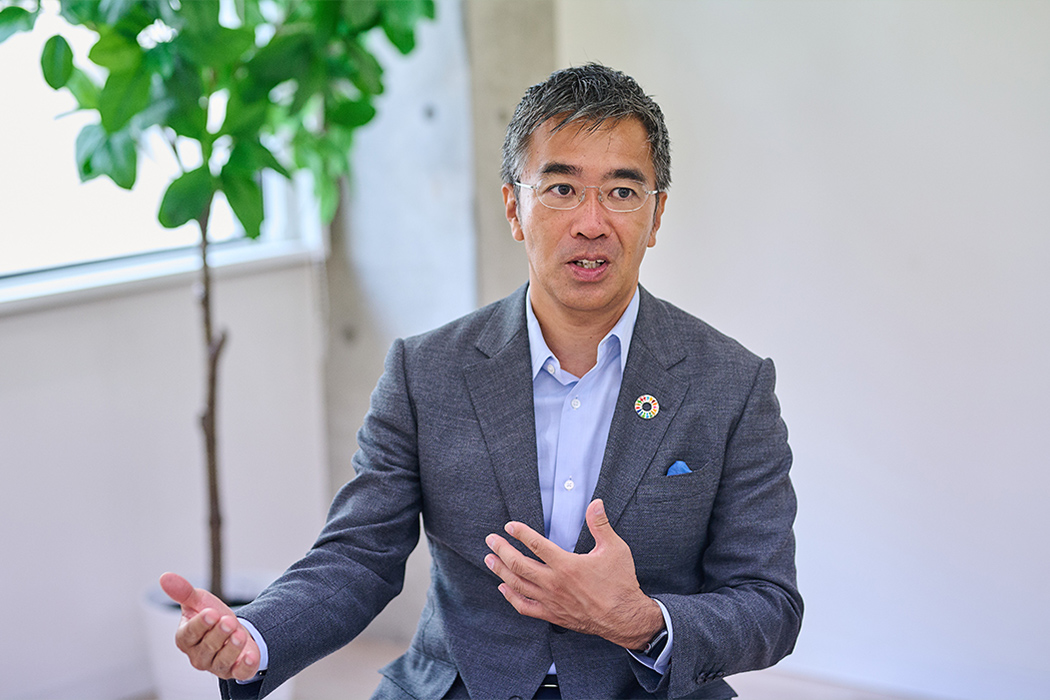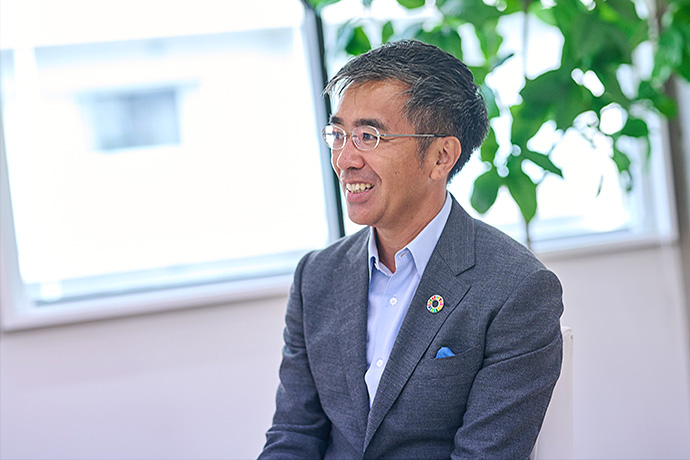
Expert Views

Norichika KanieEnjoy doing what you can for the future
First Published in Japanese in February 2023 [4 parts]
Part 1: A reminder of what carbon neutral means

── Professor Kanie, you are a leading expert in SDGs and environmental issues, and you are involved in various activities at government level.
What made you first decide to tackle the issues facing the global environment?
When I was working on my PhD in the late ‘90s, specializing in international relations policy at Keio University’s Graduate School of Media and Governance, I chose to focus on the leadership role played by the Netherlands in the Kyoto Protocol negotiations (the Kyoto Protocol is a treaty adopted in Kyoto in 1997 which set out international efforts to address climate change). Until then, I had not really given much thought to this topic, but with environmental destruction and climate change emerging as major international issues, I decided this subject was worth specializing in. When I started my research, I found that although the Kyoto Protocol had set out a policy that ran until 2012, nothing had been decided beyond that point. This meant that I was able to contribute to the discussion of what should happen beyond 2012. Since then, while teaching at universities, I have been involved in policy discussions around climate change at the Japanese Ministry of the Environment, the Ministry of Economy, Trade and Industry, and the Ministry of Foreign Affairs.
── You are active internationally as an authority on environmental issues, not just in Japan.
Yes, the UN produces the Global Sustainable Development Report (GSDR) every four years, written by a group of fifteen scientists from around the world. I was living in the US for a year when I was selected as a member of this group.
When it comes to sustainability, the UN’s Sustainable Development Goals have become a global buzzword. That said, there is much higher recognition and awareness of the SDGs in Japan than in other countries. A recent New York Times article even commented on the number of Japanese people wearing SDG badges. Of course this is wonderful, but my concern is that there may be a lack of understanding of what actions are required to achieve these goals. I’m sure a lot of people are thinking “I keep on hearing this phrase these days, but I don’t really know what it means.” However, familiarity is an important first step toward understanding, and I believe this will speed up efforts to realize the SDGs in Japan.

── 2030 has been set as the target date for achieving the SDGs. Working backwards from 2030, how do you see the current state of progress?
The effects of climate change in different parts of the world, the COVID-19 pandemic, and the war in Ukraine: these three factors are undeniably having a huge impact and have hampered progress. Social transformation is a vital theme to achieve the 17 goals and 169 targets that make up the SDGs, but the previously mentioned factors have brought society to a standstill. For example, soaring energy prices due to the war in Ukraine make coal-fired power very efficient from a cost perspective, but this would add to future environmental issues. However, looking at the SDGs, about 80% of the goals are related to tackling climate change, so this goes to show how urgently we need to address this topic.
── Greenhouse gases produced by human activity are believed to have a major environmental impact. The concept of becoming “carbon neutral”, reducing these emissions to zero, is a hot topic around the world. Could you explain what “carbon neutral” means?
Carbon neutral refers to efforts to reduce net emissions of carbon dioxide (CO2), the main greenhouse gas, to zero. So why do we use the word “neutral” rather than “zero”? The idea is that the emitted carbon should be offset in some way, effectively balancing out emissions. A typical initiative would be planting trees to absorb emissions of the greenhouse gas that cannot be avoided. Since this is a global issue, if a country cannot achieve net zero emissions on its own, countries can work together to become carbon neutral overall. However, there is no worldwide system in place yet, so there is still room for improvement.
── Environmental issues need to be addressed as a matter of urgency. Perhaps one of the challenges is a lack of public awareness of how critical the current situation is?
That’s right. In the 2000s, when I started working on environmental issues, people said: “Once we can see the effects of climate change, it will be too late to take action.” We were told we must cut greenhouse gas emissions before that happened. What is the situation now? Sadly, visible effects have started to appear. Looking back at the 2000s, it was thought that a 60-80% reduction in greenhouse gases by 2050 would be sufficient. However, we have now reached a point where we must aim to be carbon neutral, which means zero emissions. So, what should we do now for the sake of our future? I would like to share my ideas in Parts 2 to 4.